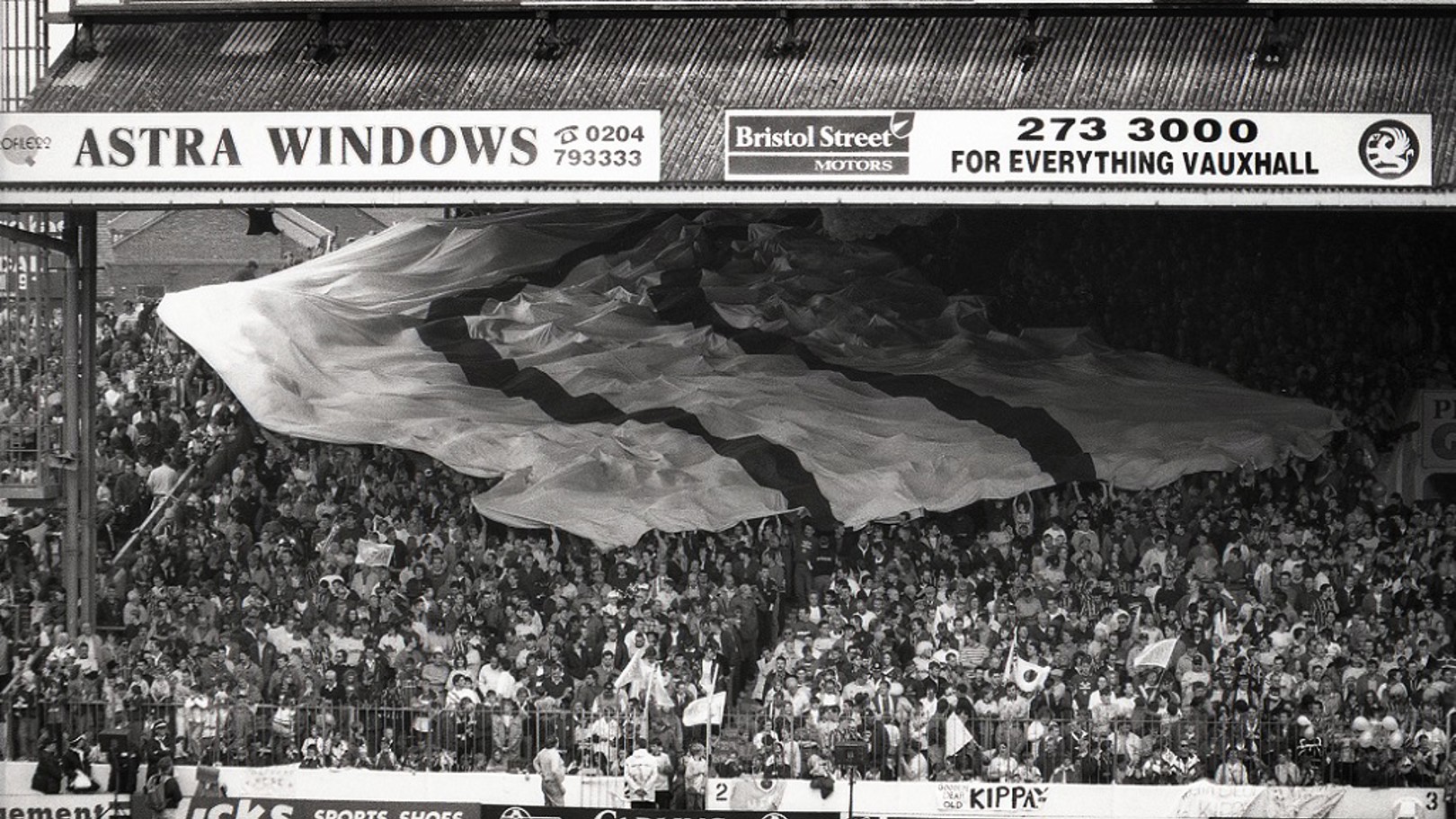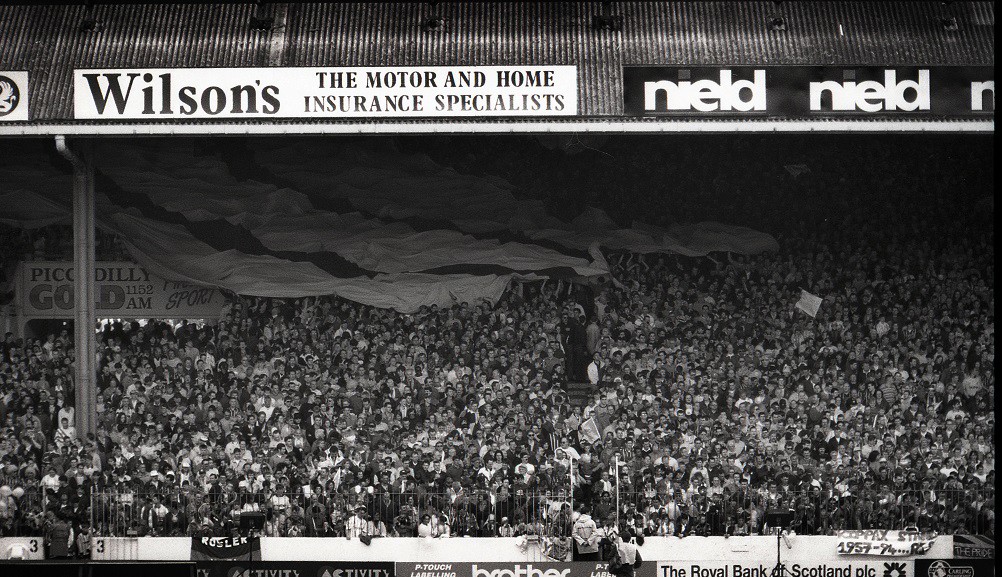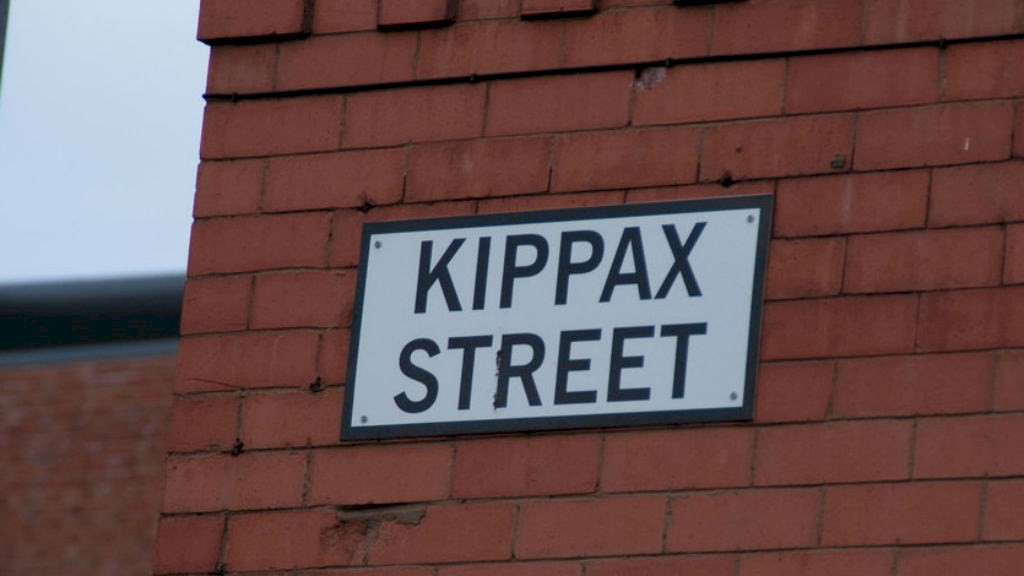The Kippax was different and gave Maine Road something most other top clubs didn’t have – a terrace that ran the length of one side of the pitch rather than behind one or both of the goals.
Every ground had its terraced area – United had the Stretford End, Liverpool had The Kop, Aston Villa had the Holte End, Chelsea had The Shed… but most or all were situated behind a goal that the hosts would like to attack in the second half.
That meant the visiting team could enjoy at least one half or relative respite before facing the banked terrace at the opposite end – but not at Maine Road where the home support was massed alongside the pitch in both halves.
Worse still, ‘The Scoreboard End’ was also a terraced stand up until the early 1970s, so there was no escape!
There were two open-sided corner terraced areas, too, but these were uncovered. In fact, the Kippax was originally known as the Popular Side after Maine Road opened its doors in 1923 and it wasn’t until a roof was finally fitted in 1956 that the stand was instead named after Kippax Street which ran along the back of the terrace.
It also meant that the City fans who stood on the Kippax could finally enjoy the game without getting soaked to the skin!
Whether the Popular Side or the Kippax terrace, that part of Maine Road housed masses of City fans and, famously in 1934, more than 84,000 crammed into the ground for the FA Cup tie against Stoke where journalists claimed people were “packed in like sardines”.
There were many vast crowds during that era, and gates of 70,000 or more were not uncommon. Through the 1950s and 1960s, huge crowds were recorded at Maine Road and the Manchester derby rarely had a gate less than 60,000.
When the Scoreboard End terrace was demolished around the early 1970s and the seated North Stand was constructed, Maine Road’s capacity was reduced to just under 53,000 with the Kippax the last terrace inside the ground.
There was nothing spectacular about the Kippax – it was basically a vast stepped concrete area with sturdy blue leaning bars scattered throughout.
It was basic in the extreme, often cold on match-days and fairly run-down – but it was much-loved by City fans.
The noisiest section was above the huge access tunnel next to the away supporters. There was segregation that ran from the top to about halfway down with the travelling fans generally penned in a small terraced are at the top holding perhaps 3,000 fans.
On derby days, or against Liverpool or sometimes Everton, the away section was expanded to include the corner terrace to the right of the away pen. This meant up to 10,000 visiting fans could take up the last fifth of the Kippax and it made for a fantastic atmosphere.
When the Taylor Report was released following the Hillsborough Disaster, Chairman Francis Lee announced a new 10,000-seater stand was going to replace the Kippax, a date was set for closure.
On April 30, 1994, City hosted Chelsea with perhaps 20,000 or so packed on the Kippax for the very last time. Many brought flags, inflatable bananas and came in fancy dress. It was a day of celebration and sadness – for many, standing on the Kippax was all they’d ever known.
Paul Walsh and Uwe Rosler scored in an entertaining 2-2 draw and at the final whistle, many fans stayed to savour the moment. Some chipped bits of concrete away as keepsakes as a minor demolition process began earlier than expected and fans weren’t ushered out by police or stewards.
Not this time…
Noel remembers...
Like many City fans, Noel Gallagher has vivid memories of his time on the Kippax.
In 2000, he recalled those early days…
“The first game my dad ever took me to was City v Newcastle United at Maine Road in 1971. That was it; City became my team.
“United were in the Second Division then and we were the top team in Manchester for about 10 years. But over the years, when City have been struggling and United have become the best team in Europe, I’ve sometimes wondered why my dad brought me to Maine Road rather than Old Trafford.
“The reason was basically a family one - my dad didn’t like his brothers. They were all Irish people who came over here and decided to support United. My dad chose City instead, just to annoy them. No other reason than that. Liam and I should by rights have been United fans.
“My dad used to take us into the Kippax Stand and sit us up on this narrow brick wall at the back, where we’d lean against this big sheet of corrugated asbestos, and then he’d go off to the bar with all the other dads.
“I remember in that first game we absolutely murdered Newcastle 5-1. But the only goal I saw (because if City got anywhere over the halfway line it got a bit chaotic and we were too small to see over the crowd) was Malcolm MacDonald’s.
“The Kippax was basically a big shed. It was very dark - there was no lighting and a really huge roof coming down low, so it was like looking at a television screen.
“Nowadays in football grounds fans tend not to sing a lot. But in the Seventies it was deafening in the Kippax. It was like the sound coming out of a speaker. We sang ‘Lily The Pink’, one about Colin Bell called ‘Colin The King’ and all the naive old ones like ‘Tommy Booth Walks on Water’. It was only in the Eighties that songs began getting witty and complicated and having swearing in them.
“Wednesday night games were even better than Saturday afternoon games. The pitch seemed greener and it was usually an exciting game like an FA Cup match. We began going regularly on Saturday afternoons when we went to secondary school and met other City fans, and my mum could trust us to go out on our own. I went religiously every other Saturday between the ages of 12 and 21.”









